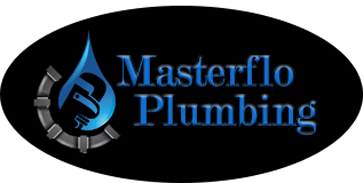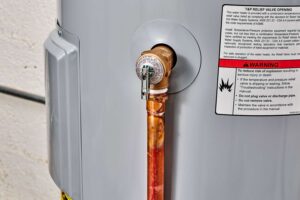To uncover hidden plumbing leaks, start with a visual inspection. Look for water stains, mold, or discoloration. Use the water meter to monitor any changes when all sources are off. Dye testing and pressure gauge analysis help identify leaks accurately. Infrared technology offers precise detection without property damage. By combining these methods, you can efficiently find hidden leaks in your home. Learn more about professional leak detection for additional insights.
Key Takeaways
- Visual Inspection: Check for water stains, mold, and discoloration.
- Water Meter Monitoring: Monitor the meter for changes without water usage.
- Dye Testing: Introduce dye to locate leaks in the plumbing system.
- Pressure Gauge Analysis: Measure pressure drop to identify hidden leaks.
- Infrared Technology: Use infrared cameras to detect temperature variations indicating leaks.
Visual Inspection
To begin uncovering hidden plumbing leaks, start with a thorough visual inspection. Grab a flashlight and carefully examine all visible pipes, joints, and fixtures. Look out for any signs of water stains, mold, or mildew, as these could indicate a leak nearby. Check under sinks, around toilets, and behind appliances like washing machines and dishwashers. Don't forget to inspect the walls and ceilings for any discoloration or bubbling paint, as these could be a result of water seeping through.
Pay close attention to any musty odors or persistent dampness in certain areas of your home. These could be silent indicators of a hidden leak lurking behind the walls or under the floors. If you notice any sudden spikes in your water bill without a plausible explanation, it's worth investigating further for potential leaks. Remember, early detection is key to preventing extensive water damage and costly repairs down the line. So, roll up your sleeves and start sleuthing to uncover those sneaky plumbing leaks before they wreak havoc on your home.
Water Meter Monitoring
Monitoring your water meter can be a useful tool in detecting hidden plumbing leaks in your home. To begin, make sure that all water sources in your house are turned off, including faucets, appliances, and irrigation systems. Locate your water meter and check if the leak indicator (often a small triangular dial) is moving. If the indicator is spinning despite no water usage, it's likely that you have a leak somewhere in your plumbing system.
Next, record the reading on your water meter and wait for a few hours without using any water. After the waiting period, check the meter again. If the reading has changed, even though no water was consumed, this could indicate a hidden leak.
Dye Testing
Consider utilizing dye testing as a proactive method for uncovering hidden plumbing leaks in your home. Dye testing involves introducing a colored dye into your plumbing system to identify leaks by tracing the path of the dye. Here are three steps to conduct a dye test effectively:
- Choose the Right Dye: Select a dye that is compatible with your plumbing system and safe to use. Common options include fluorescent dyes that are easily visible under UV light.
- Introduce the Dye: Add the dye to the plumbing system by flushing it down a drain or toilet. Make sure that the dye is well-distributed throughout the pipes.
- Check for Leaks: Once the dye is in the system, observe areas where leaks are suspected. Look for any traces of the colored dye outside of the pipes, which can indicate a leak that needs to be addressed.
Dye testing can be a simple yet effective way to pinpoint hidden plumbing leaks and take timely action to prevent further damage.
Pressure Gauge Analysis
For a thorough evaluation of your plumbing system, assess leaks through a Pressure Gauge Analysis. This technique involves using a pressure gauge to measure the pressure in your pipes. Start by shutting off all water sources and confirming no water is being used in the house. Once the system is completely still, attach the pressure gauge to an outside faucet. The gauge will display the pressure in your pipes; a drop in pressure indicates a potential leak.
To conduct the analysis, note the initial pressure reading and then leave the gauge attached for a few hours. If the pressure drops notably during this period, it suggests there may be a hidden leak. It is important to repeat this process at different times to ensure accuracy, as pressure changes can occur throughout the day.
Pressure Gauge Analysis is a cost-effective method to detect leaks and can pinpoint their location accurately. By implementing this technique, you can identify hidden plumbing issues early, preventing further damage and saving on costly repairs.
Infrared Technology
Utilize infrared technology to swiftly detect hidden plumbing leaks with precision and efficiency. This advanced technology allows you to pinpoint leaks without causing any damage to your property. Here are three ways in which infrared technology can assist you in uncovering hidden plumbing leaks:
- Visualize Temperature Variances: By using infrared cameras, you can visualize temperature differences in your walls, floors, and ceilings. These temperature variations can indicate the presence of a hidden leak behind the surface.
- Identify Moisture Accumulation: The infrared technology can detect moisture accumulation in areas where leaks are present. This helps in locating the exact source of the leak without the need for extensive exploration.
- Efficient Detection Process: With the ability to scan large areas quickly, infrared technology offers an efficient detection process. This saves time and enables you to address the plumbing leak promptly, preventing further damage to your property.
Professional Leak Detection
When employing professionals for leak detection services, make sure they have the necessary expertise and equipment to accurately identify hidden plumbing leaks. Professional leak detection companies employ trained technicians who utilize advanced tools such as acoustic devices, thermal imaging cameras, and endoscopic cameras to pinpoint the exact location of leaks without causing unnecessary damage to your property.
These experts have the knowledge and experience to interpret the data gathered from these tools accurately. By relying on their expertise, you can save time and money by avoiding extensive exploratory work to locate the source of the leak.
Additionally, professional leak detection services can provide a detailed report outlining the findings of the inspection. This report can be vital for insurance claims or for providing evidence during repair discussions with plumbers.
Conclusion
Masterflo Plumbing, North Georgia's premier plumbing company, with over 20 years of experience and a team of master plumbers, is your go-to solution for all your plumbing needs. Whether you require water heater repair or replacement, or assistance with minor or major plumbing issues, you can rely on Masterflo Plumbing to serve Cherokee County and metro Atlanta with top-notch service and expertise.

